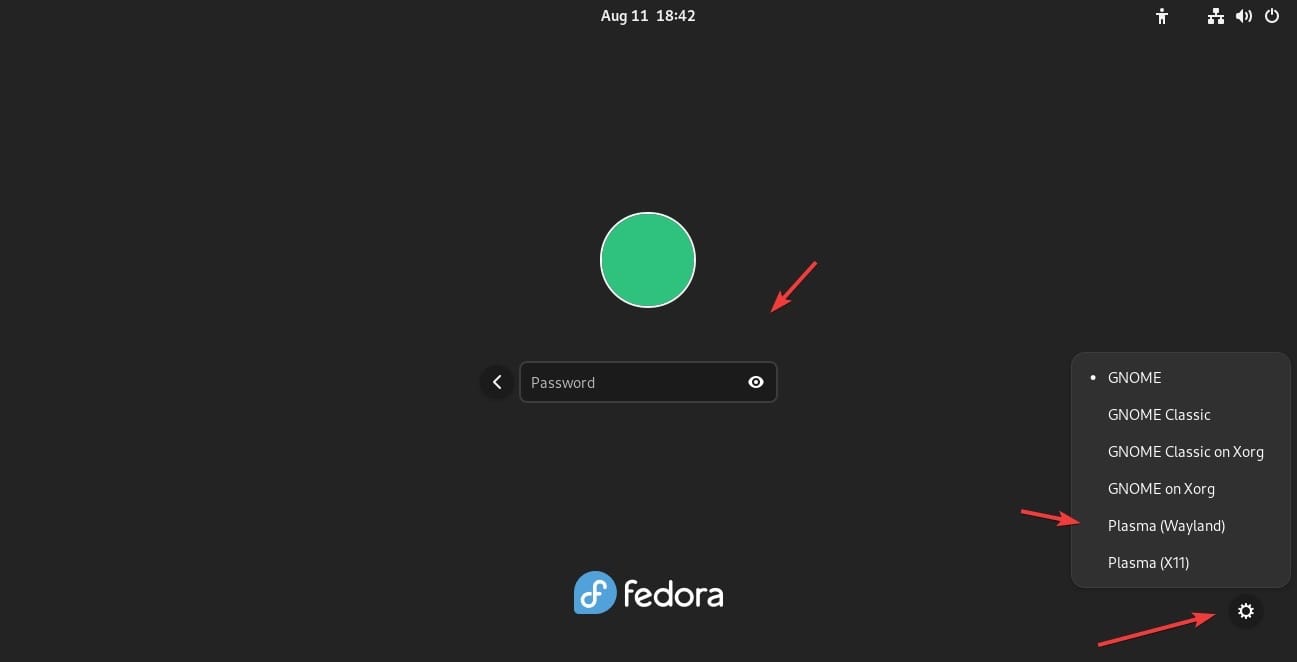How To Install KDE Plasma on Fedora 41

Are you looking for a sleek, customizable, and feature-rich desktop environment for your Fedora 41 system? Look no further than KDE Plasma! In this comprehensive guide, we’ll walk you through the step-by-step process of installing KDE Plasma on Fedora 41, providing you with detailed instructions, troubleshooting tips, and additional resources to ensure a smooth and enjoyable experience.
What is KDE Plasma?
KDE Plasma is a popular open-source desktop environment known for its flexibility, customization options, and modern design. It offers a wide range of features, including a highly configurable desktop layout, integrated search, widgets, and a suite of KDE applications that work seamlessly together. Compared to the default GNOME desktop in Fedora, KDE Plasma provides a more traditional desktop metaphor and greater control over the look and feel of your system.
Prerequisites for Installing KDE Plasma
Before you begin installing KDE Plasma on your Fedora 41 system, ensure that your machine meets the following requirements:
- A 64-bit processor
- At least 4 GB of RAM
- 20 GB of free disk space
- A fresh installation of Fedora 41 (Workstation or Server edition)
It’s also crucial to update your Fedora system to the latest version to avoid any compatibility issues. Open a terminal and run the following command:
sudo dnf updateStep 1: Enabling the RPM Fusion Repository
The RPM Fusion repository is a third-party software repository that provides additional packages for Fedora, including some KDE Plasma components. To enable the RPM Fusion repository, follow these steps:
- Open a terminal.
- Run the following command to enable the RPM Fusion Free repository:
sudo dnf install https://download1.rpmfusion.org/free/fedora/rpmfusion-free-release-$(rpm -E %fedora).noarch.rpm- Run the following command to enable the RPM Fusion Non-Free repository:
sudo dnf install https://download1.rpmfusion.org/nonfree/fedora/rpmfusion-nonfree-release-$(rpm -E %fedora).noarch.rpmStep 2: Installing KDE Plasma Packages
Now that the RPM Fusion repository is enabled, you can proceed with installing the KDE Plasma packages using the dnf package manager. To install KDE Plasma, follow these steps:
- Open a terminal.
- Run the following command to install the KDE Plasma desktop environment:
sudo dnf group install "KDE Plasma Workspaces"This command will install the core KDE Plasma packages, including the Plasma desktop, KWin window manager, and essential KDE applications. If prompted, type “y” and press Enter to confirm the installation.
If you encounter any issues during the installation process, such as missing dependencies or conflicts, try running the following command to resolve them:
sudo dnf --allowerasing install "KDE Plasma Workspaces"Step 3: Enabling SDDM Display Manager
KDE Plasma uses the Simple Desktop Display Manager (SDDM) as its default display manager. To enable SDDM and set it as the default display manager, follow these steps:
- Open a terminal.
- Run the following command to enable SDDM:
sudo systemctl enable sddmIf you encounter an error stating that SDDM is not installed, install it using the following command:
sudo dnf install sddmAfter enabling SDDM, you should see a confirmation message indicating that the symlink has been created.
Step 4: Rebooting and Logging into KDE Plasma
To apply the changes and start using KDE Plasma, you need to reboot your Fedora system. Follow these steps:
- Open a terminal.
- Run the following command to reboot your system:
sudo rebootAfter the reboot, you will be greeted by the SDDM login screen. Click on the desktop environment selector (usually located in the top-left corner) and choose “Plasma” from the list. Enter your login credentials and press Enter to log into your new KDE Plasma desktop.

Post-Installation Tweaks and Customization
Congratulations on successfully installing KDE Plasma on your Fedora 41 system! Now, let’s explore some post-installation tweaks and customization options to make your KDE Plasma experience even better.
Updating to the Latest KDE Plasma Version
To ensure you have the latest features and bug fixes, update your KDE Plasma installation by running the following command in a terminal:
sudo dnf updateInstalling Additional KDE Applications
KDE Plasma comes with a set of default applications, but you can install additional KDE apps to enhance your productivity and customize your desktop experience. Some popular KDE apps include:
- Dolphin: A powerful and customizable file manager
- Konsole: A feature-rich terminal emulator
- Okular: A universal document viewer
- Gwenview: A fast and easy-to-use image viewer
To install these applications, use the following command:
sudo dnf install dolphin konsole okular gwenviewCustomizing the Desktop Theme and Icons
One of the strengths of KDE Plasma is its extensive customization options. To change your desktop theme and icons, follow these steps:
- Right-click on the desktop and select “Configure Desktop.”
- In the “Settings” window, navigate to the “Global Theme” section.
- Choose a theme from the list or click “Get New Global Themes” to download additional themes from the KDE Store.
- To change the icon theme, go to the “Icons” section and select a theme from the list or download new icon themes from the KDE Store.
Configuring KDE System Settings
KDE Plasma offers a comprehensive system settings app that allows you to configure various aspects of your desktop environment. To access the system settings:
- Click on the Application Launcher (the “K” icon) in the bottom-left corner of the screen.
- Search for “System Settings” and click on the icon to open the app.
- Explore the different categories and settings to customize your KDE Plasma experience according to your preferences.
Troubleshooting Common Issues
While installing and using KDE Plasma on Fedora 41 is generally a smooth process, you may encounter some issues. Here are a few common problems and their solutions:
Black Screen After Login
If you encounter a black screen after logging in, try the following:
- Press Ctrl+Alt+F2 to switch to a virtual terminal.
- Log in with your username and password.
- Run the following command to restart the KDE Plasma desktop:
sudo systemctl restart sddmMissing or Crashing Panels
If your panels are missing or crashing, try the following steps:
- Press Alt+F2 to open the KRunner dialog.
- Type “kquitapp5 plasmashell” and press Enter to quit the Plasma shell.
- Type “plasmashell” and press Enter to restart the Plasma shell.
Slow Performance
If you experience slow performance, consider the following tips:
- Disable desktop effects: Go to System Settings > Desktop Behavior > Desktop Effects and disable any resource-intensive effects.
- Reduce the number of running services: Go to System Settings > Startup and Shutdown > Background Services and disable any unnecessary services.
- Update your graphics drivers: Ensure that you have the latest graphics drivers installed for optimal performance.
Congratulations! You have successfully installed KDE Plasma. Thanks for using this tutorial for installing the KDE Plasma desktop environment on Fedora 41 system. For additional help or useful information, we recommend you check the KDE Plasma website.